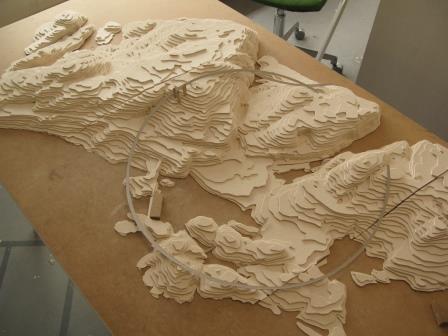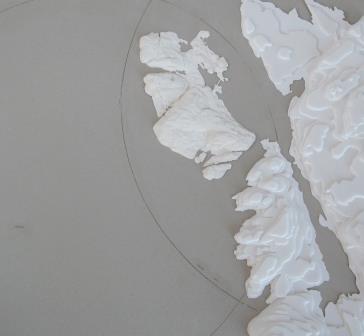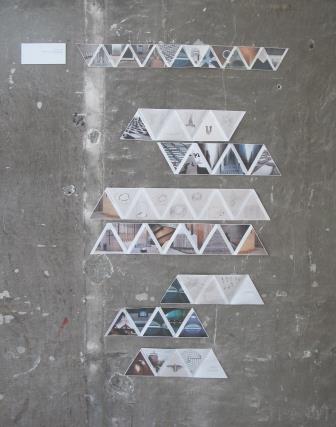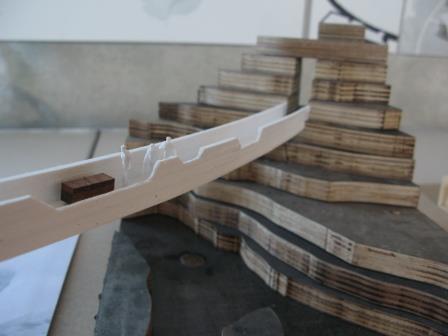Diploma 2014: "OPPHØYD ROM" by Lina Aakerøy
- negotiating ceremonial spaces at the archipelago of Øygarden, Norway
Å Opphøye:
_ assign a higher or more noble position,
status or dignity. Attributing a greater value.
_ bring to a higher spiritual level
_ glorify, praise (in Biblical texts)
When arriving at Toftestallen, one steps out of pace and customs of the everyday life, and a seemingly endless sky, sea and horizon unfolds ahead. The waves strikes against the bare rock and remnant structures of a shut down wave power station. This diploma project seeks to articulate the potential of holding parting rituals at this last island between civilization and the open sea.
The diploma work is largely divided into three parts. The first part of the project consists of a theoretical approach to the notions of ritual and sacrality, and their possible role and relevance in a secular society.
Rituals, understood as actions giving meaning beyond pure practicality are often turned to when we are confronted with something “bigger than ourselves”. If taken as a fact that all societies distinguish between profane and sacral, between what is trivial and of special importance, beyond the everyday life, sacrality and rituals are no longer aspects only relevant within religious frames. In a multicultural constellation, a society where what is sacred is no longer predefined by a common doctrine, sacrality becomes something “re-definable”, possibly individual.
Still, ceremonies and their spaces are likely to stagnate in pre-set traditions and customs. The project aims at discussing how rituals and ritual space can be negotiated and re-appropriated to resonate with our current society.
The second part is a work of deconstruction and comparison, of existing sacred buildings and sequences in a funeral process.
Death is a topic that concerns everyone, that is heavily charged with emotions and customs, and which is also of public responsibility, entailing issues of land use and practicalities around the handling of the body.
The period of time from death occurs until the final ceremony is in this project described as a “walk” through time and space in different formal processes and stages of mourning and remembrance. This is also the approach to the project site where it is emphasized on including a wide range of ritual actions, where a walk through the cemetery is considered of equal importance in the grieving process as the public funeral ceremony.
The third part is an architectural response to the topic, an imagined memorial landscape in Øygarden, west of Bergen.
A tilted circular path intervenes in the majestic, raw landscape, leading to two gathering spaces, a crematorium and an outdoor columbarium. It stretches from the lower eastern part of the island to the exposed western top and invites for a walk through the landscape, geological time and personal memories. The path leads to different characteristic points in the landscape suitable for spreading of ashes or for having a rest protected from the wind. The tilting angle of 2° makes the challenging landscape more accessible for walks and the moving of coffins between the ceremonial spaces and the crematorium. The project is organized without specific liturgical organization to prevent from directing the ceremonies. The aim is to create a memorial landscape that is suitable for public funerals as well as for individual use.
All photos: Lina Aakerøy

Landscape model in process

Site situation 1:2000

Reference projects

Model study of crematorium

Model of the ramp in scale 1:100
Illustration : memorial landscape
